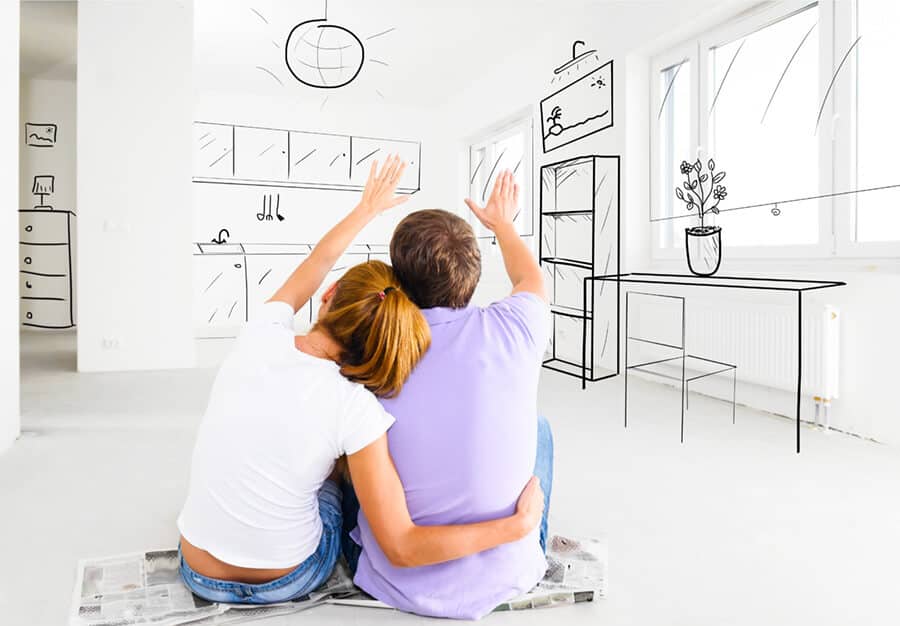In Part One of our Must Have items for your home, we travelled the globe in search of items that some households can't live without. Now we're back to find some more.
The Best Home Items
Dryer – USA
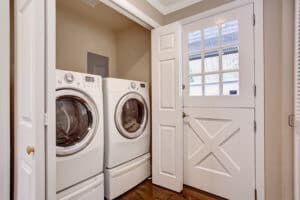
A typical American household has a washer and a dryer. Once you finish washing the clothes, you place them in the dryer with a dryer sheet for fragrance. Not all homes in America have a washer/dryer set due to space or plumbing regulations. In some larger cities it may be illegal to install these in your home, but they tend to have plenty of laundromats for public use. For Americans reading this wondering what the rest of the world does with their wet clothes – we hang them up outside or inside, on foldable racks or out the window old-school style. It takes longer, but the clothes last longer and it’s more eco-friendly.
Find out more here in 25 small laundry rooms, which can be very useful for your home items.
Bidet – France
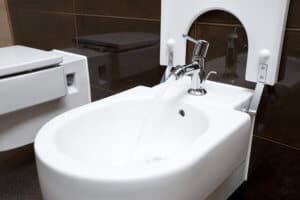
Bidets are not unique to France, but they are a necessity in a French bathroom. Bidet is a French word for ‘pony’, and in Old French, bider meant ‘to trot’. This etymology comes from the notion that one “rides” or straddles a bidet much like a pony is ridden. For those who don’t know, bidets are used to clean up after doing your business. Using toilet paper isn’t always the best way to get clean and bidets can replace toilet paper completely.
While they are popular in France and other European countries, they are most common in Italy.
House Slippers – Czech Republic
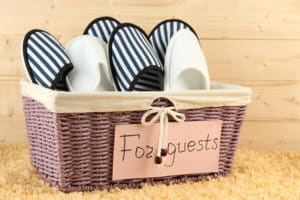
Most cultures are against wearing outdoor shoes inside. But it is considered rude to strip your guest of shoes and leave them walking around with bare feet or in their socks. Czechs are notorious for providing every guest with slippers. It is polite to accept them and wear them throughout your stay. One time when I lived above my landlord, she came and gifted me with slippers to soften the stomping on the hardwood floors, so that’s an extra slipper perk!
Electric Blanket – New Zealand
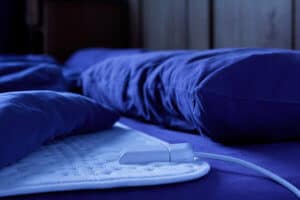
Similarly to the heated table in Spain in Part One, electric blankets are common in New Zealand homes. Since the country is generally warm, central heating isn’t worth the effort in most homes. Electric blankets help people stay warm even during the chilliest months. They are great for sleeping but also watching TV on the sofa. They come in various sizes just like mattresses and yes, they make it that much harder to leave the cosy warm bed in the morning.
Clay Water Filter – Brazil
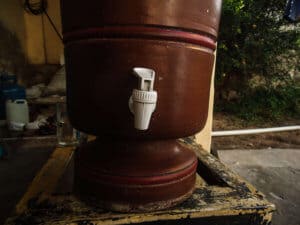
Having clean water is sought after all over the world. While most countries have filters made of other materials, Brazil is known for their clay filters. The ceramic São João was the first filter to be manufactured by Ceramica Stéfani, in 1947. They remain popular today, made with all of its traditional characteristics. These are super durable and made from an eco-friendly material unlike it’s plastic alternatives.
They are also easy on the eyes because of their bright color and elegant design!
Electric Candles – Sweden
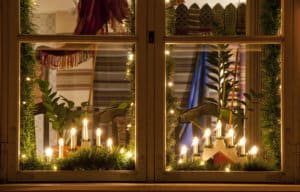
Ljusstake elektrisk, or electric candles, are on display in the window of every Swedish home during Christmas time. These cute candles come in various styles but always have numerous candles and plugs into a socket. They also have advent candles with their very own tradition. The electric advent candelabra cannot be experienced anywhere else in the world. Since Sweden is located in the north, they have little sunlight during the winter months.
These electric candles are not only pretty but functional as they provide light during the darkest months.
Toilet Hose – Bahrain
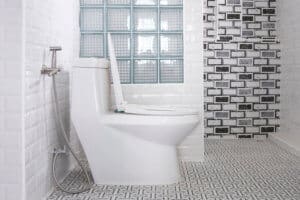
It all comes back to the toilet! While we don’t typically discuss toilet matters during our daily lives, we do spend a significant amount of time in the bathroom. In Bahrain, a typical thing to see in the bathroom is a toilet hose. These are not unique to Bahrain alone and are common in traditional Arab bathrooms. Similar to a bidet, you can use the hose instead of toilet paper for a cleaner and more eco-friendly bathroom experience.
We don’t clean our dirty hands with just a piece of paper, so why do we treat our privates differently?
German Toilets – Hungary
Speaking of poop, Hungarian bathrooms typically have what are known as German toilets. What makes a toilet German?
The poop shelf! Instead of having the toilet bowl full of water, there is a shelf to catch your excrements. When you flush the toilet, everything on the shelf will be swept into the water but you will likely need to finish cleaning up with a toilet brush.
These toilets used to be popular all over Europe and are way more efficient than the ones we see today. They use less water and are way more eco-friendly, but they do require more work to keep clean.
Air Conditioning – Singapore
Air Conditioning is not unique to Singapore and can be found all over the world in warmer-climate countries. Singapore is unique because the heat there is a bigger issue than in many other places around the world.
Unlike Dubai, which is a newer city built to keep people cool, Singapore has got hotter over the years.
Today they are busy building shaded passageways on streets to keep people from passing out from heat stroke as they go about their day.
Any time you enter a home, restaurant or business, you’ll feel the stark contrast of the cool AC on your skin.
China Cabinet – Egypt
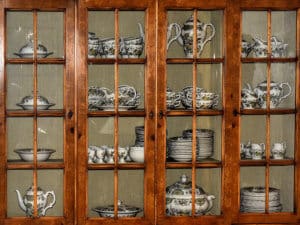
Many people in Egypt still abide by traditions such as having a fancy china cabinet to hold tea sets and the finest china. This china cabinet is known as نيش, pronounced neiche in English. This cabinet is supposed to be extravagant and hold only the most beautiful plates. You can find one even in lower-end households, but it may not be as nice or expensive. Fun fact: the items in it are typically not used, just on display or reserved for only the most highly regarded guests. For example, for a daughter’s future groom and his family.
Jaffle Maker – Australia
A Jaffle maker is also known as a pie iron in Australia. The funny thing is, these are available all over the world but used differently in each country. In America, this would likely be used to make a grilled-cheese sandwich.
In Australia, where a Jaffle maker can be found in almost every household, it is predominantly used to cook savory pies.
They can also be used to make sandwiches and other delicious snacks!
Underground Oven – Hawaii
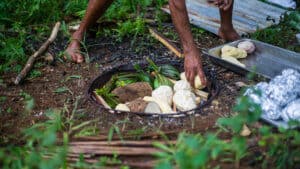
Speaking of delicious snacks, in Hawaii people enjoy roasting and eating entire pigs. Unfortunately, a Jaffle maker would not suffice and neither would your standard home oven. That is why Hawaiians cook their pigs whole outside and underground. While not every Hawaiian home will have a traditional underground oven called an Imu, they are quite common. When families get together for Thanksgiving or other celebrations, an Imu will often be used to prepare the feast.
Pialky – Kazakhstan
Kazak families enjoy their tea just like many cultures all over the world. What they do differently, is they prefer to drink them out of small, shallow bowls known as pialky.
These bowls allow for tea to cool more rapidly and you hold them with two hands, in your palms.
In Japan and a few other cultures, people also prefer to drink their tea out of bowls rather than cups.
While using a shallow bowl speeds up the cooling of the tea, drinking out of one requires one to slow down and be mindful to avoid spilling the contents of the bowl.
Water Bucket – Thailand
This list started with a toilet so it is only right to end with one.
In Thailand, especially in more rural places and areas closer to the beach, bathrooms tend to have water buckets. Fancier places may have a hose just like Bahrain, but that requires extra plumbing work.
Many countries with homes by the beach struggle constantly with plumbing. It is easier and more eco-friendly to simply use a bucket full of water to splash yourself clean. When you see a water bucket by a toilet, this also means that you can’t flush toilet paper in it. If it is offered, make sure to put used paper in the trash instead.
But once again, using toilet paper isn’t enough to clean yourself so you might as well embrace the water bucket and enjoy a cleaner experience.
Homes are personal places that allow families to live, grow and thrive.
Even though many things are the same in homes around the world, each culture has something unique that others may not.
It can be an appliance, a religious item, a particular traditional decoration or piece of furniture. Now you are armed with the knowledge that will prepare you for international travel!
Which home items are you using?
Photos: Shutterstock
Support us!
All your donations will be used to pay the magazine’s journalists and to support the ongoing costs of maintaining the site.
Share this post
Interested in co-operating with us?
We are open to co-operation from writers and businesses alike. You can reach us on our email at [email protected]/[email protected] and we will get back to you as quick as we can.
